How can you not love Virginia Bluebells (Mertensia virginica)? They are coming into their own in our garden right now. The clusters of soft blue tubular flowers are fantastic, especially combined with the pink and purple buds.
But Virginia Bluebells could sometimes use a little help. For starters, they are ephemerals. Once they go to seed they pretty much collapse, starting with the tender blue-green foliage. They need companions who will fill in through the summer. Plus, in my opinion all plants could use a little help with color contrast now and then.
Though I can’t emphasize strongly enough that I am crazy about blue flowers.
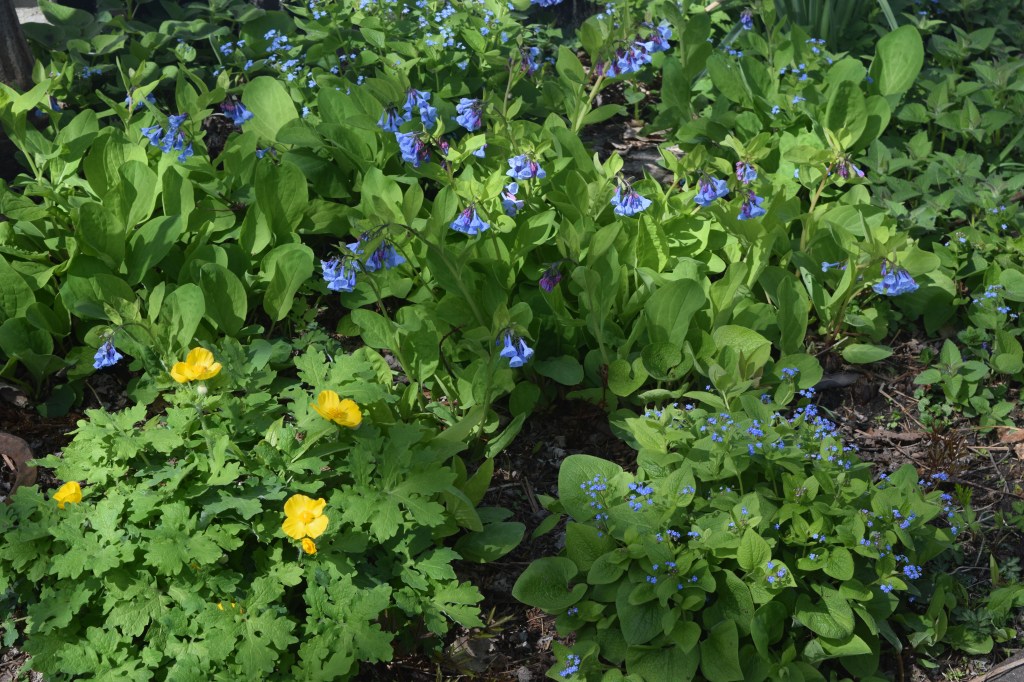
Celandine Poppy or Wood Poppy (Stylophorum diphyllum), are a good choice for color contrast. Their bright yellow flowers are more or less synchronized with the Bluebells. The foliage lasts longer then the Bluebells’ but it can get a bit ratty over summer, especially in drier spots.
Also, a warning: Celandine Poppies self-sow like mad. However, in my experience they do not overwhelm other sturdy woodland plants like Wild Geranium (Geranium maculatum). Virginia Bluebells and Celandine Poppies are both native to the American Midwest.
Brunnera macrophyllum (also known as False-Forget-Me-Not or Siberian Bugloss) is another useful companion for Bluebells. As the common name suggests, its clusters of tiny sky-blue flowers look much like Forget-Me-Not (Myosotis sylvatica) However, this plant makes an effective summer groundcover in moist, shady conditions and spreads steadily through seeding and clumping. It is not a North American native. Variegated cultivars are very popular, but I stick with the straight species.
Ferns are another useful companion for Virginia Bluebells. We have several North American ferns that emerge just as the Bluebells are in flower, then stay green through the summer.
If you like a pink and blue combination, you can always combine Bluebells with Bleeding Hearts (Lamprocapnos spectabilis), though the two species don’t always get their timing just right.
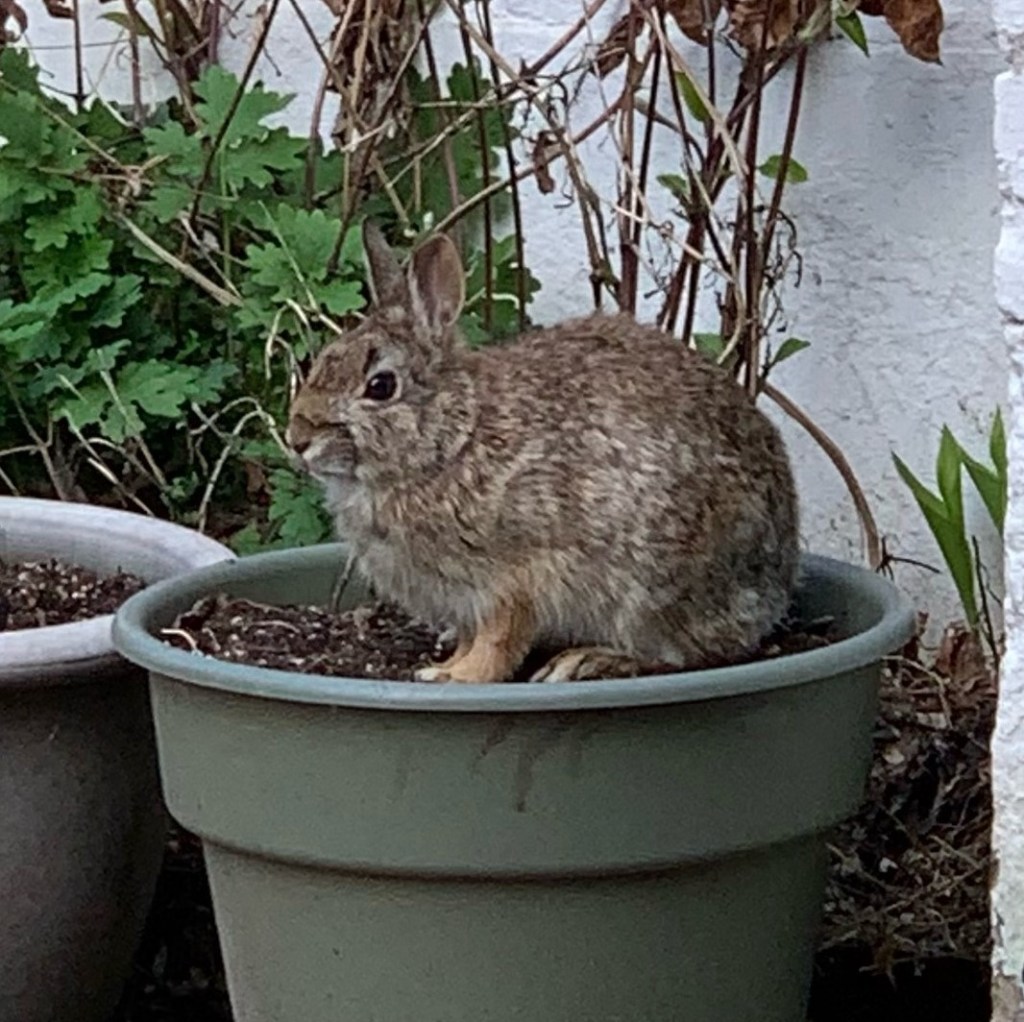
So we’ve talked about friends, but what about foes? My Virginia Bluebells were happily seeding themselves around our garden when suddenly the rabbits started chomping on them, just at the point when the flowers were opening. For some reason the Bluebells were around for at leas three years before this started happening.
For a while I was distraught, until this spring someone suggested using Irish Spring soap to protect my Tulips, and I started using it to deter rabbits from my Virginia Bluebells as well. I understand that correlation is not causation, but to date there have been no rabbit attacks on the Bluebells. Though this weekend a couple of Tulips were decapitated by bunnies – my first losses of the season, and still a casualty rate much improved from other years, at least so far.
So I’m going to stick with what seems to be working until someone shows me a better alternative. The stuff smells pretty awful, and I wouldn’t want to be eating with that scent in my nose.

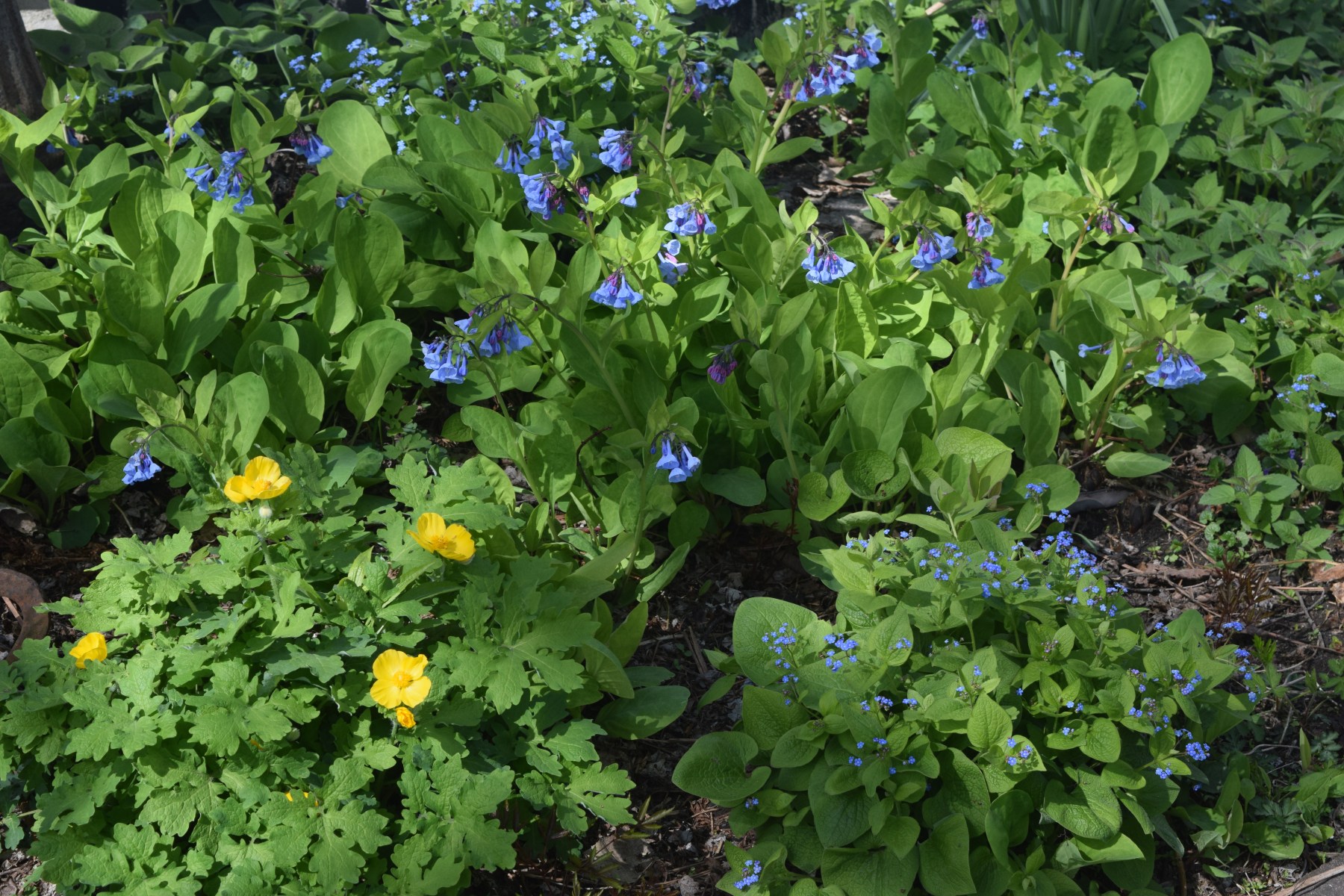
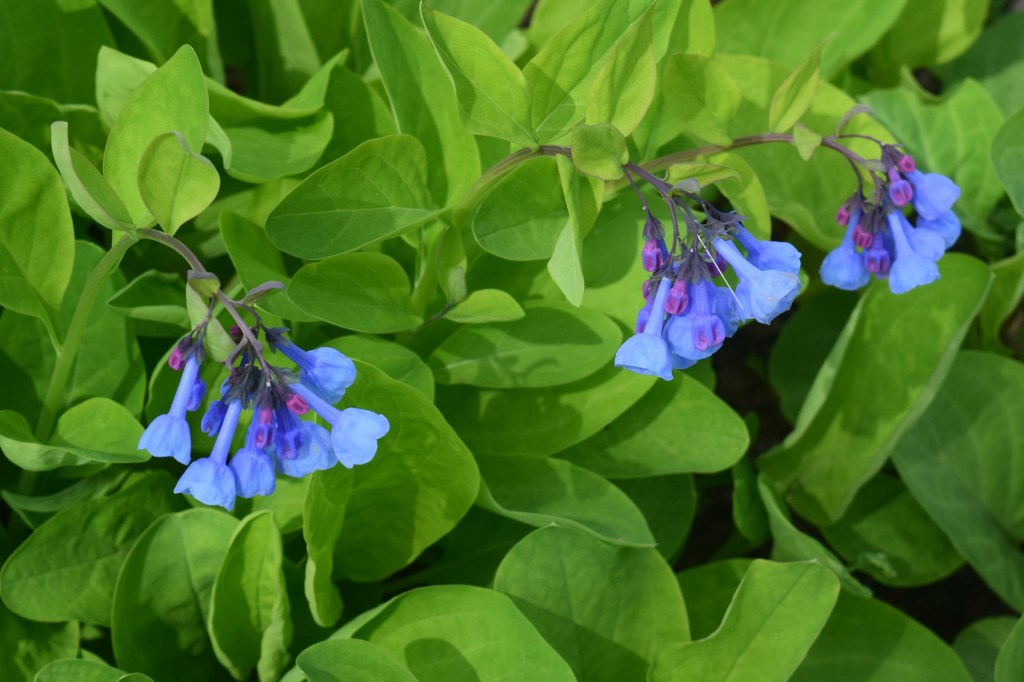
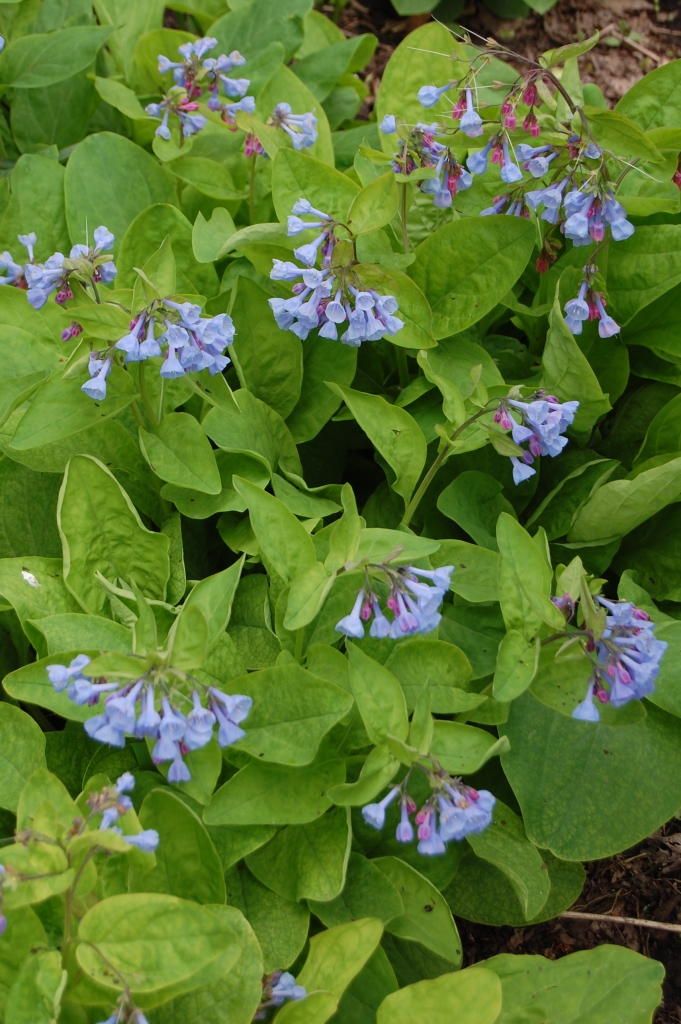
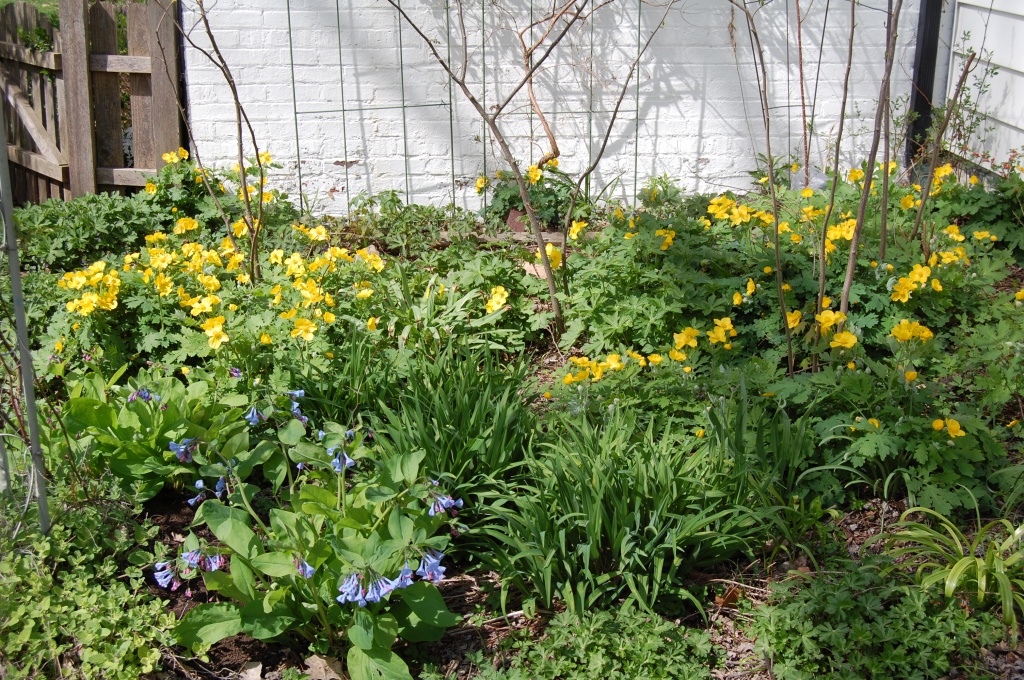

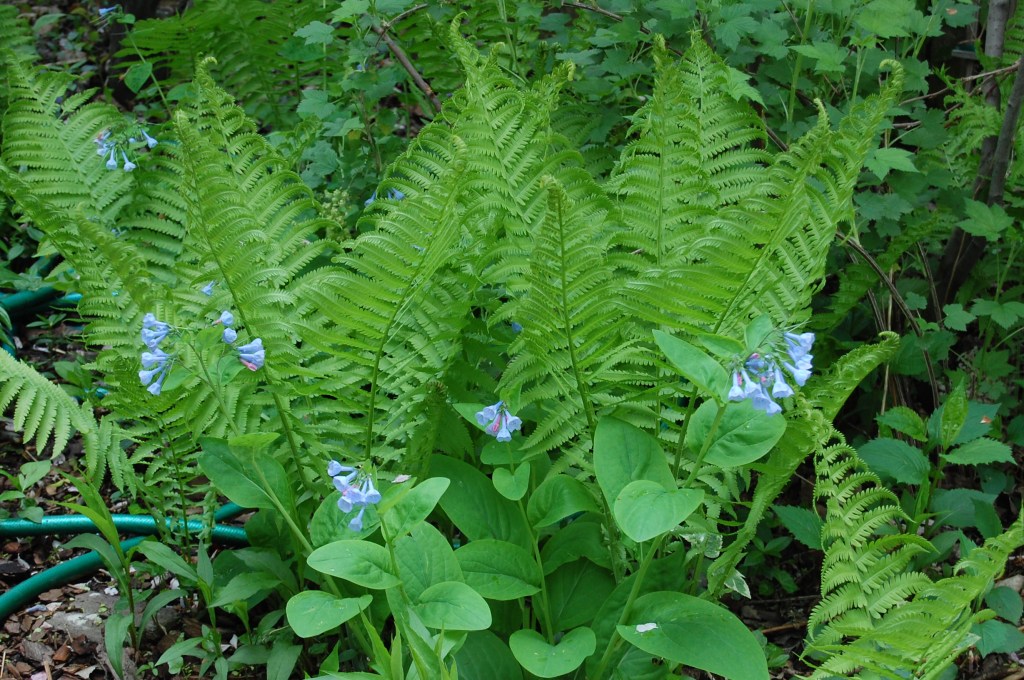
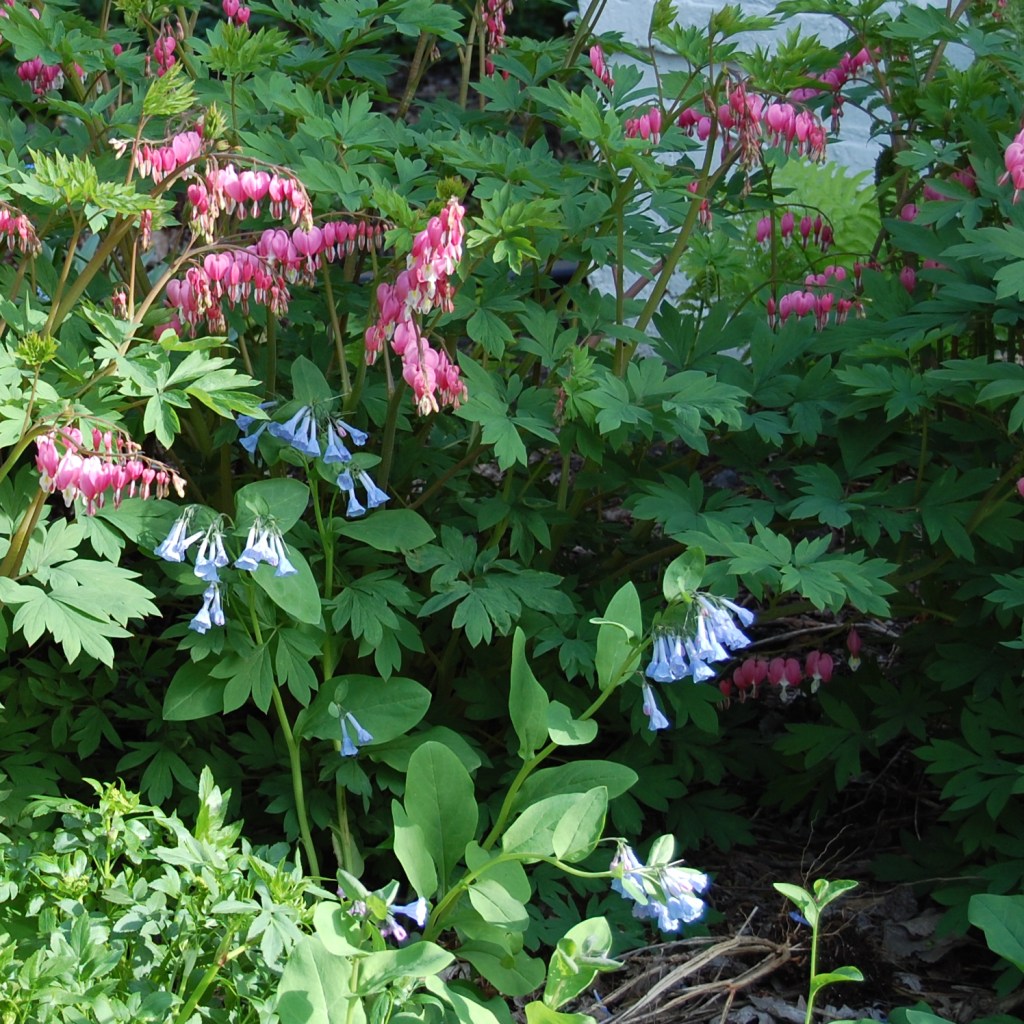





I’ve never seen bluebells in person but I’ve them on blogs and they’re always very beautiful. I hope that rabbit will leave them alone!
I love those blues too. I would stay away from Irish Spring odor too! Gak! Imagine showering in it ON PURPOSE! Your bunnies are well fed.
Too much so!
I was enjoying the photos and studying your companioning and then was totally wrecked by that rabbit — in a flowerpot, no less. The wretched thing probably thinks he belongs there. Because of your mention of Irish Spring, I’ve been using it. I think it might be something of a deterrent but it’s too early to tell. I have some nasty thing digging under the grass now too, so I shoved some Irish Spring down in that mess. It would sure send me a different direction.
Not sure that IS works on rodents that burrow underground, but maybe …
Based on what I see this morning, I’d say that IS simply acted as a lovely air freshener and made the tunnel more homey. Worth a try, though.
I have a photo of a small bunny in one of our pots last year. It is so disheartening. I have heard about Irish spring soap before. I will be trying it this summer.
Needless to say, I’m a huge fan of this plant. So sorry to hear about the bunnies but sounds like you have found a solution. We also use irish spring to deter squirrels when they start to get interested in nests with eggs in our deck window boxes and it seems to work. Va bluebells and celandine poppies are such a wonderful combo!
Dwat that wabbit! He looks completely at home in that pot. Your Virginia bluebells and celandine poppies are such a lovely combo. I’ve never grown either of them. And I’ll keep the Irish spring in mind if the bunnies start misbehaving. They seem to enjoy clover and violets, both of which I have in abundance.
They are welcome to the clover and violets, no shortage of either!
What a huge bunny! Well fed!
Like you, I have had mertensia for years. Right now they are in bloom next to trillium. I’m surprised my celandine poppies haven’t spread to the Virginia bluebell area. I’d much rather see that combination than the emerging bindweed!
My trillium are not blooming just yet.
Sure learned a lot from this post about shady plants and companions. Many thanks! As for bunnies…may the luck of the Irish be with you. 😉
Blue and yellow go so well together, I hope you sort your rabbit problem with your soap, but I think you need a cat!
Our cats caught a mouse yesterday, but I don’t think they would tackle anything as large as this rabbit. (Plus they are indoor cats. Hmm, we need a neighbor with a large tough cat!)
A neighbor who is does not enjoy gardening mentioned that the rabbits are quite numerous this year. They just might be; but they are not as big and voracious as they are in other regions. In my entire career, I can remember rabbits being problematic only once, and they were jackrabbits up in Brisbane near San Francisco. They are impossible to control!
Your bluebells are really quite blue, like forget-me-not blue, which is nice to see as most blue flowers have a tendency towards purple. We don’t have that soap here, but I am going to try cinnamon on my carex which my hares adore and have grazed on all spring. Time for action!
My mother always said we should not laugh at other peoples’ misfortunes but I have to confess that I laughed out loud when I saw that big rabbit sitting in your flower pot! Is your celandine poppy the same as our greater celandine or Chelidonium major? I get the greater celandine in my garden too. Amelia
No the celandine poppy is unrelated to greater celandine – genus is Styllophorum. Similarity is just yellow flowers. Spreads by seeds but doesn’t run.
I wish my bluebells and poppies would spread like yours! I hear from many that the reseed and spread but I haven’t had that experience (yet). Your spring ephemeral combinations are stunning!
I’ll confess that the photo of the bunny’s my favorite, but of course I feed squirrels on purpose, so what do you expect? If I had a flower or veggie bed, I expect I’d be looking for the Irish Spring, too. Are these bluebells the same as those I’ve seen in the English bluebell woods? They’re very pretty in every setting.
No the VA bluebells don’t seem to naturalize in England. The bluebells that grow in English woods are usually Spanish or English bluebells which we can grow here by planting bulbs.
Thanks for the info!
So gorgeous, you can’t go wrong with blues. I bought Irish Spring recently too, I think after seeing you mention it.
I have several Virginia Bluebells in my gardens and just ordered more. I love the colors – they are quite cheery. Rabbits like my yard too which I usually don’t mind. If they begin eating the Bluebells I will buy some Irish Spring. Usually they eat the Gazanias – which is both adorable and funny because after they delicately bit off the flower stalk, they begin nibbling at the bottom of the stem and right before they get to the flower it looks like they’re holding a flower between their lips. Then … chomp. It’s gone. I don’t mind losing a few Gazanias for the entertainment.
I guess it’s a question of degree. I don’t mind if rabbits have a nibble here or there but when they wipe out whole plantings i get upset. The issue here is rabbit overpopulation – we need more predators.
Very nice naturalistic woodland planting. I haven’t seen Virginia bluebells before, but have plenty of an equivalent blue in forget-me-nots. I do think the fern adds so much elegance, but mine are still at the about-to-unfurl stage, seems yours are more advanced. Good luck with the rabbits, hope they go elsewhere to munch!
Most years the Ostich ferns don’t unfurl until the VA bluebells are about done, some years they are earlier.
Oh, I love blue flowers, how lovely is that combination with the yellow poppies. Sorry to say it, but that is one adorable bunny. sighs…I’ll get my coat…xxx
It’s been a long time since I found rabbits to be adorable.
I love Bleeding Hearts, both my mother and I always planted them…but they don’t seem to like Canberra’s frosts, so I’ll just enjoy yours.
I am interested to see the Irish soap. Do you grate some of it and put it in the garden? So glad it seems to be working.
He cuts the bar of soap into slabs, not quite an inch thick. And do note, just because it’s called “Irish Spring” doesn’t mean it has any connection to Ireland! The soap is green and white – maybe it dates back to the Kennedy administration? Some advertising guy thought “Irish” would help sell it. 😳🤷🏻♀️😁
Thanks Judy, it seems to be working anyhow!
I always thought of Bleeding Hearts as fairly hardy,
I’ll give them another try!
I always feel envious when I see your Virginia bluebells because I have tried growing them here but they always disappear. But I don’t envy you those rabbits getting fat on your tulips. I hang soap on my roses to discourage deer from nibbling.
Well, of course you have all those English bluebells.
Yes, the bluebell woods are looking wonderful just now.
Hi Jason .. This is a cute post in so many ways because of the bunny of course, but also the Irish Spring method .. I have heard of it before and if it works ? why not keep using it. I am lucky not to have a bunny problem but some of these squirrels are just wicked .. Garden PA throws a couple of peanuts at them to get them to leave .. it works .. but the boomerang problem does too !
Those Bluebells are gorgeous as are the wood poppy ! I rely on scilla and grape hyacinth plus the brunnera for some shots of blue in the Spring .. and indeed you do have ostrich ferns .. now they can multiply like mad but easily dug out and I have to admit they are great for difficult sights where you want a hit of green.
Lovely fresh looking Spring post !
Virginia bluebells are lovely – don’t have those in my garden quite yet. I purchased some Irish spring last year, but never got around to using it. I’ll by trying this year as I had big issues last year with several plants, especially hostas where a few of the varieties were a particular delicacy. I’ve also purchased a spray called “Bobbex” that’s supposed to stay put even after a rainfall, so you only have to re-apply a few times during the season…it’s supposed to smell pretty bad when you apply but dissipate within a day or two, so we’ll see how that goes.
The Fern and Virginia bluebells combination gets my vote. I have been pulling out yellow poppies… they were WAY to happy spreading their seeds everywhere, and have rather impressive roots.
Lovely photo of that fat and happy “potted” bunny… I have encounter them as well in last 2-3 years. Where are the coyotes when you need them…
It’s true about the yellow poppies, they do spread like mad.
I love blue flowers. I love bunnies, too, but the pet type that don’t eat gardens. I’ve heard a lot of people who used Irish Spring to deter them. Glad to know it works.
Thanks, again, Jason, this is going to be another one I add to my shopping list for the shady areas of the garden, where I just don’t want to put yet another fern. We do have Myosotis, which look similar, but are biennial and they’re currently colonising the new border that I completed at the end of last year. I hope the Irish soap continues to work for you.